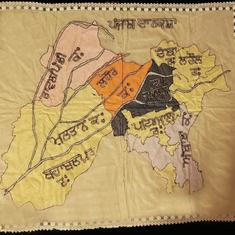As shambolic heroines in popular culture go, there are few like Rachel. An alcoholic who spikes her water bottle and drinks to the point of blackouts, Rachel remains obsessed with her ex-husband Tom, his new wife Anna and their baby girl. Rachel regularly leaves drunken messages on Tom’s phone and has even broken into his home a few times.
Rachel takes the train into the city every day that passes by her old home, and she soon transfers her attention to a couple who live a few doors down from Tom and Anna. Megan and Scott remind Rachel of her happy times with Tom, and every time the train passes by, she presses her face to the window pathetically. When Rachel sees Megan embrace a man who is not her husband one day, and when Megan goes missing, Rachel’s obsession gains meaning.
That is as far as the barebones plot goes for the novel that has inspired the movie of the same name. In Paula Hawkins’s 2015 bestseller, suspense and mystery are deftly woven into an unvarnished and sometimes brutal depiction of the damage than men do to women and women do to themselves. Rachel’s unreliable narrator is a product of heartbreak, low self-esteem and serial bad choices, and her efforts to stumble back to her feet often end in failure. Anna and Megan are no paragons of virtue either. Anna stole Tom from Rachel, while Megan is not the ideal wife she appears to be. Hawkins takes these unlikely heroines and puts each of them through the wringer, with Rachel getting the full blast of the writer’s tough love.
But in the movie adaptation, a dense narrative with multiple viewpoints that is both page-turner and portrait of domestic hell gets reduced to a lachrymose drama. Tate Taylor’s version makes a few bad choices. Emily Blunt initially seems to be perfect as Rachel, but her character comes off as uni-dimensional, weak and melodramatic. Blunt brings sensitivity to the role, but it is not enough to summon up the walking disaster that is Rachel. The screen Rachel is jittery, weepy and permanently anguished. The novel does a better job finding the layers of steel that are buried beneath the wreckage.
Gone, too, from the film are the many plot twists that reveal the mixed motivations of the other characters. Anna (Rebecca Ferguson) and Tom (Justin Theroux) are cursorily sketched, Scott barely gets any screen time, while Kamal (Edgar Ramirez) makes a a brief and forgettable appearance. The men in the movie have been sacrificed for unconvincing women.
Rachel’s blackouts drag on the suspense in the book to its thrilling climax, but in the movie, they serve no purpose beyond attempting to increase unearned sympathy for Rachel.
The movie’s trump card is, surprisingly, the character whose purpose is to serve as a plot trigger. Haley Bennett has been as unfairly compared to Jennifer Lawrence as has The Girl on the Train to Gone Girl, but the young actress is perfectly cast as Megan, and lends empathy and pathos to her unsympathetic character.
The decision to move the story from Britain to America has no function other than increasing the plot’s universality. Lost in adaptation is the binge drinking culture that Rachel represents and the nuances of British suburban travel that will be familiar even to visitors. The transatlantic relocation is like one of Rachel’s many ill-judged choices – it does nothing, and ends badly.











